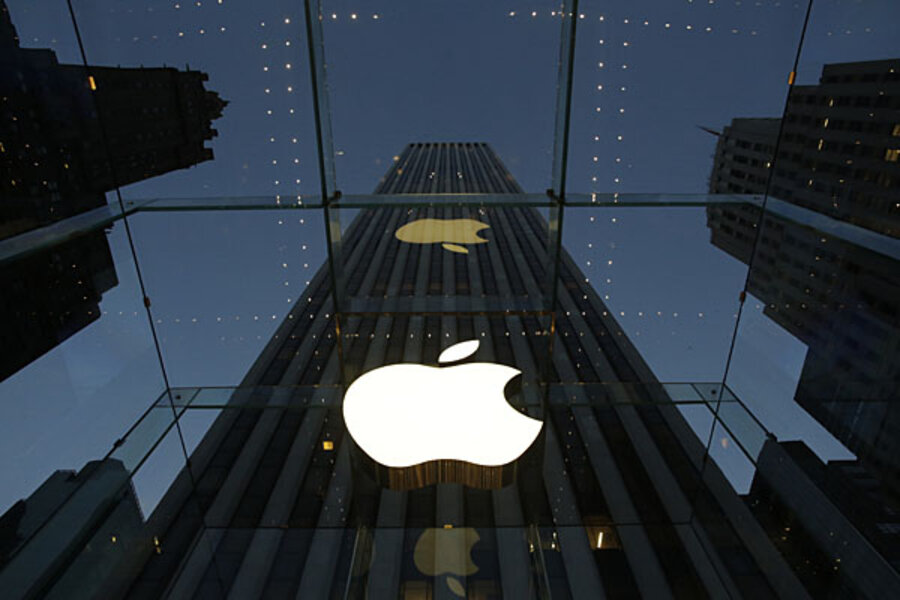Apple (AAPL) splits stock, but what does that mean for you?
Loading...
If you follow the stock market you might have noticed something interesting today. Apple stock (AAPL), which was trading at $646 on Friday, hovered over $93 per share midday Monday. But have no fear, Apple is still one of the most valuable companies in the world.
In April, Apple announced a 7-for-1 split of its stock, which took effect on Monday. What does the split mean for investors, current and otherwise? We have the answers below.
What is a stock split?
A stock split is when “a company divides its existing shares into multiple shares,” according to Investopedia. If you own Apple stock, multiply the amount of shares you had before June 2 by seven and divide their individual value by seven.
“If the share is at $700, you would swap your one share for seven shares trading at $100 each,” said Peter Cohan, adjunct professor at Babson College.
This changes the amount of stocks available for investors. The amount of Apple authorized stock is increasing from 1.8 billion to 12.6 billion.
Why do companies split stock?
The move seems to be straight out of a psychology of economics textbook. “We want Apple stock to be more accessible to a larger number of investors,” Apple said on its website. By lowering the price of each share, smaller investors can begin to see Apple stock as a possible investment.
Cohan said the stock split is an attempt to lure more investors. “There is a thought process that if [the stock] is trading below $100 a share it is inexpensive,” Cohan said. “They thought people weren’t investing because it was too expensive. Going from three figures to two figures breaks a mental barrier.”
What does this mean for current investors?
Very little. Investors who had $1,000 of stock on Friday still have $1,000 worth of stock on Monday. The only difference is investors have seven times as many shares as they did last week.
Has something like this happened before?
This is Apple’s fourth stock split. Splits previously happened in 1987, 2000, and 2005. In each of these the stock was split 2-for-1. So why split it 7-for-1 now? It has to do with the attempt to lure more investors. Splitting the stock by seven brought the price per stock below three figures, and thus can possibly break through the mental barrier of $100.
Is it a good time to invest?
Maybe. In 1987, stock rose two percent after the stock option in the first year. In 2000, stocks fell 57 percent after the stock split, and after the 2005 stock option the stocks soared 60 percent, according to ABC News.
However, Cohan doesn't think it is a good time to invest in the stock. “I don’t think it is a good time to buy the stock unless you see the company making more money than it has in recent years,” Cohan said. “I view [the stock split] as a cheap trick that isn’t in-line with Apple’s values – to create a great product and charge a premium for it.”






